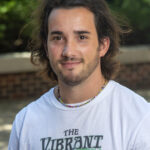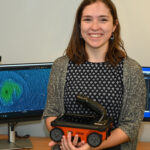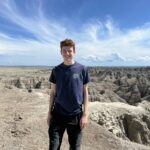SOL: 4
Name of person filing report: Jeus Meza-Galvan
Non-nominal systems: All systems nominal.
Notes on non-nominal systems: No non-nominal systems.
ROVERS
Spirit rover used: Yes
Hours: 238.3 (before EVA)
Beginning charge: 100% (Before EVA)
Ending charge: 41% (On return from EVA, before recharging)
Currently charging: No
Opportunity rover used: Yes
Hours: 149.1
Beginning charge: 100%
Ending charge: 47%
Currently charging: No
Curiosity rover used: No
Hours:
Beginning charge:
Ending charge:
Currently charging: Yes
Perseverance rover used: No
Hours:
Beginning charge:
Ending charge:
Currently charging: Yes
General notes on rovers: Rovers functioning properly.
Summary of Hab operations: Everyone (7 people) showered today.
WATER USE: 36 gallons
Water (static tank): 423 gallons
Static tank pipe heater (on or off): On
Static tank heater (on or off): On
Toilet tank emptied: No.
Summary of internet: Internet is nominal.
Summary of suits and radios: Suits and radios are nominal.
Summary of GreenHab operations:
WATER USE: 3 gallons
Heater: On
Supplemental light: On
Harvest:
Kale: 103 g
Parsley: 8 g
Arugula: 8 g
Cilantro: 7 g
Summary of ScienceDome operations: Science dome used for EVA de-brief and geological sample organization.
Dual split: Heat or AC: On
Summary of RAM operations: (Tools used, work done): Tools retrieved from RAM to repair observatory shutter. Used screwdrivers and small ladder. Both were placed back in the RAM after use.
Summary of any observatory issues: Observatory shutter was repaired. Observatory dome is now functioning properly. Dome is closed.
Summary of health and safety issues: No health or safety issues.
Questions, concerns and requests to Mission Support: None.
Journalist Report – December 14th
Lipi Roy, Crew 288 Journalist
12.14.2023
Sol 04
Four days of EVAs, stargazing, harvesting, and cooking later, I can positively confirm for the entirety of my crew – never again will we ever underestimate the power of a hot shower.
The day began with the tunes of ‘Star Man’ and Riley’s (XO) wonderful pancakes. Filled to the brim with Nutella, syrup, and peanut butter, and energized with Hunter’s (Crew Geologist) crash course of Stretching 101, we were ready for today’s geology EVA.
With an aim to collect volcanic rock samples, Hunter, Cesare (commander), Jesus (crew engineer), and I headed off to the exquisite Barainca Butte; a place whose geological richness would be enough to pique the interest of any geologist. Now, our Hunter isn’t just any geologist, so you can imagine what would have happened! Just kidding, he led the EVA well, often sharing his geology wisdom with us.
“Spot, mark, take ‘before’ photo, take sample, take ‘after’ photo, and repeat” – sounded so simple when Hunter explained it, but add an EVA suit, gloves, and time constraint – and this becomes nothing less than a challenge. Four-and-a-half hours of that later, we came back to a wonderful lunch Riley had decided to surprise us with. Thanks Riley!
It was also supposed to be a delicious carrot-cake afternoon, right Ryan? His ‘switching off the oven lights’ to surprise us, didn’t quite go in his favor because when he unraveled the finished product, it seemed to be less of a cake and more of an overflowing burnt-sugar carrot sauce . A few more minutes of that, and I could have collected another volcanic rock sample from that lava. Cesare and Jilian (HSO) decided to see the silver lining and attempted to eat the sauce. Well, it was a masterpiece in its own unique, slightly burnt, way.
Don’t worry Ryan. These things happen. And as Cesare said – ‘if never make any mistakes, you’ve never tried anything new’! Anyhow, we appreciate the thought behind it; and you did manage to redeem yourself at dinner with a yummy Pad-Thai and with an actual carrot cake.
The biggest highlight still was the hot shower the whole crew was allowed to get today. I understand the importance of water conservation in a mission like this, but I swear, I will never again look at a shower in the same way again.
GreenHab Report – December 14th
Crew 288 GreenHab Report 14-12-2023
GreenHab Officer: Ryan DeAngelis
Environmental control: Heater on automatically. Turned fan on from 11:00 am to 5:00 pm today to reduce high temperatures (99 degrees according to the guage at one point). Door was kept closed.
Average temperatures: 99 peak, but dropped down to 75 after fan was kept going.
Hours of supplemental light: 10 pm to 2 am (four hours).
Daily water usage for crops: 3 gallons
Daily water usage for research and/or other purposes: None
Water in Blue Tank (200 gallon capacity): __3_ gallons
Time(s) of watering for crops: 5:00 pm (watered later due to attempt to dry out soil on cucumbers and tomato plants.
Changes to crops: Harvested half a bed of baby kale, some parsely, cilantro, and arugula.
Narrative: I walked into the GreenHab at approximately 11 am, and noticed that it was extremely hot due to it being a very warm day. I turned the fan on to cool it down. I harvested parsley at around 11:30 am. I returned around 5 pm to water the plants, turn off the fan, and harvested a lot of kale, some arugula, as well as some cilantro. Planning to check on the plants one more time this evening before going to bed.
Harvest: Kale: 103 grams, Parsely: 8 grams, Arugula: 8 grams, Cilantro: 7 grams. Total: 126 grams.
Support/supplies needed: Same cucumber plants and tomatoes not doing that well, continuing to discuss with ecology expert and observing (currently seeing if drying out soil is helping).
EVA Report – December 14th
EVA # 4
Author: Hunter Vannier
Purpose of EVA: EVA to obtain volcanic samples in fluvial channel near Barainca Butte.
Start time: 1100
End time: 1530
Narrative: EVA began at 1100 led by Hunter and Cesare and joined by Lipi and Jesus. The crew took Spirit and Opportunity rovers south on Cow Dung Road to Barainca Butte. Spirit started with 100% charge and 238.3 hours. Opportunity started with 100% charge and 149.1 hours. The crew drove south until reaching the beginning of 1101 and parked. The crew unloaded equipment and walked west along the trail and observed numerous volcanic rocks. Approximately ~1200 they established a station to sample one large vesicular basalt boulder. The region contained numerous scattered fist-sized volcanic rocks, mostly basalt but some andesite, which appeared to be transported fluvially. We obtained spectra and documented the sampling with photographs and GPS coordinates; these steps were repeated at subsequent stations. The crew continued walking until reaching Barainca Butte and investigated the area for any other source of volcanic rocks. We then approached the butte and Cesare led sample collection of light toned sedimentary boulder and accompanying sediment, establishing Station 2. The crew observed boulders at the butte base representing multiple stratigraphic units. They then began returning to the rovers. Approximately ¼ of the way back, they established a third station and collected six samples that well represented the volcanic diversity of transported material in the region, but the question remains where exactly they were sourced from. The crew returned to the rovers at 1406 and packed the gear and stowed samples. then stopped at Kissing Camel Ridge on the way back. There, Hunter led the gathering of spectra and samples at 2 geological sites on the north side of the West Camel Ridge, following up on scouting from EVA #3. The team made it back to the HAB with Spirit at 41% charge and 238.3 hours and Opportunity at 47% and 238.3 hours. They began the reentry process for the HAB at 1520.
Destination: Barainca Butte, Kissing Camel Ridge
Coordinates (use UTM WGS 84): Barainca: N519000, E4247300; Kissing Camel: N5180000, E4249500
Participants: Cesare Guariniello (Executive Officer), Lipi Roy (Crew Journalist), Jesus Galvan (Crew Engineer), Hunter Vannier (Crew Geologist)
Road(s) and routes per MDRS Map: Drive south on Cow Dung Road and park at intersection with 1101. Then walk west 1-1.25 km. On return to Hab, stopped at Kissing Camel to conduct second set of measurements along the northern base of Kissing Camel Ridge W within ¼ km of road.
Mode of travel: driving and walking (Spirit and Opportunity)
Astronomy Report – December 14th
[category
astronomy-report]
Astronomy Report
Name: Cesare Guariniello
Crew: 288
Date: 14 Dec 2023
MDRS ROBOTIC OBSERVATORY
Robotic Telescope Requested (choose one): MDRS-WF and MLC-RCOS16.
Objects to be Imaged this Evening: Barnard 33 (Horsehead Nebula) and M42 (Orion Nebula)
Images submitted with this report: None.
Problems Encountered: MDRS-WF reports a Camera Error on Skynet Live
MUSK OBSERVATORY
Solar Features Observed: None
Images submitted with this report: None
Problems Encountered: None. I took a photo of the decoupled ball screw. However, the crew Engineer Jesus and I found that the motor works, so we re-coupled the ball screw, and tested both the full opening motion and closing motion of both the top shutter and bottom shutter.
Mission Plan – December 10th
Crew 288 – Phobos
Dec 9th, 2023 – Dec 23rd, 2023
Crew Members:
Commander and Crew Astronomer: Dr. Cesare Guariniello
Executive Officer: Riley McGlasson
Crew Geologist: Hunter Vannier
Crew Engineer: Jesus Adrian Meza Galvan
Health and Safety Officer: Jilian Welshoff
Green Hab Officer: Ryan DeAngelis
Crew Journalist: Lipi Roy
Mission Plan:
The twin “Phobos” (288) and “Deimos” (289) missions are the sixth and seventh all-Purdue crew at MDRS. The enthusiasm and interest raised by the previous experiences of Purdue students and alumni at the station, the numerous high-quality research projects carried on at MDRS, as well as Purdue’s honored tradition in the field of space exploration, granted us two back-to-back rotations.
Crew 288 will perform various research tasks, with a strong geological focus, augmented by engineering projects, astronomical observations, and analysis of human factors. Some of the experiments will be performed inside the MDRS modules, while others require Extra Vehicular Activities (EVA), thus adding realistic difficulties to the task. As usual, the combination of excursions and life inside the habitat will provide crew members with the opportunity to both working on their research and identifying potential difficulties of working with space suits and living in close quarters in a small habitat.
The main objectives of the Phobos analog Martian mission are:
Keeping the highest level of fidelity and realism in the simulation. Earth analogs cannot reproduce Martian gravity and atmosphere, but the crew will keep every other aspect into consideration. This includes safety and research protocols, definition of roles and daily schedule, EVA protocols (and limitations), communication protocols, fruitful collaboration with the program director and mission support, and adaptation to limited resources and environmental difficulties.
Performing research in the fields of geology, engineering, human factors, and crew operations on Mars.
Experimenting with personnel at Purdue, providing a simulated mission control center to coordinate and support research and operations (including delay in communication, to simulate Earth-Mars distance).
Continuing the fruitful collaboration of Purdue crews with the MDRS program.
Following the mission, supporting MDRS with useful results for future crews.
Crew Projects:
Title: Noninvasive search for water
Author(s): Riley McGlasson
Objectives:
Description: The team will use a 450 MHz ground penetrating radar (GPR) to quantify the moisture content of the soil at locations near the MDRS. This radar is sensitive to water content in the top 10 cm of soil, which would be easily accessible by astronauts for ISRU. During EVAs, GPR transects will be taken in a grid formation across the survey area. Analysis of these data will be performed back in the HAB, where we will determine the dielectric constant of the soil. The dielectric constant can be used in existing simple models, to determine a soil moisture content.
Rationale: In-situ resource utilization (ISRU) will be a critical aspect of future Mars exploration, as astronauts will not be able to bring all required supplies with them. Ground penetrating radar is an excellent noninvasive tool for probing subsurface composition, and assessing the ability to use it to search for water will aid future Mars astronauts.
EVAs: 4-5 medium to long EVAs
Title: Refining orbital data with In-Situ analysis
Author(s): Hunter Vannier
Objectives:
Description: Prior to arrival at MDRS, the team will create EVA (extra-vehicular activity) plans based on high resolution orbital images to assess mineralogical diversity and identify targets. Science and traceability matrices will be developed to evaluate the effectiveness of each EVA. When in the field, EVA members will assess differences between orbital and field data, noting how strategies/plans change to accomplish EVA goals.
Rationale: Satellite imagery and data will almost always be the only resource mission planners have to prepare for human landings on the Moon and Mars. Using this data to accurately interpret the geology and physical characteristics of landing sites is critical for defining scientific objectives and maximizing crew safety. Equally important is recognizing the limitations of orbital data and how plans may change when greater details are revealed when astronauts land on the surface.
EVAs: 4-5 EVAs
Title: Remote sensing for ISRU
Author(s): Cesare Guariniello
Objectives: Demonstrate the use of instrumentation for structural analysis of potential locations for building on Mars
Description: The goal of this project is to test the use of remote sensing performed in various locations to support advanced In-Situ Resource Utilization. In particular, assessment of mineralogy via remote sensing will provide information about material abundance. Laboratory study of thermal inertia and its correlation with bulk size (sandy vs. rocky) will add one more variable to the study. Thermal Inertia is correlated to particle size and cohesiveness of the material, which in turn suggests the most appropriate tools to effectively collect the material for processing. Water content is assessed via the analysis of the depth of absorption bands in the spectra.
Rationale: In-Situ Resource Utilization will be necessary to reduce the amount of material carried to Mars. For construction purposes, engineers and geologist will need to initially rely on remote sensing for prospecting.
EVAs: 3-4 EVAs
Title: Semiconductor processing
Author(s): Jesus Meza-Galvan
Objectives: explore the feasibility of semiconductor manufacturing in-situ
Description: This study aims to explore the feasibility of semiconductor manufacturing in-situ. The work seeks to establish rudimentary solid-state device manufacturing techniques with an emphasis on utilizing resources already available in station. Phase-1 of the mission is to explore the fabrication of a basic metal-oxide-semiconductor (MOS) capacitor at the station. Future research efforts could be expanded to more complex devices like PN junction solar-sails or MOSFET transistors.
Rationale: All modern electronic devices utilize complex solid-state circuits made possible by advanced micro-fabrication techniques such as photolithography, plasma etching, metal evaporation, and wet chemistry. The equipment used for micro-fabrication is typically costly, delicate, and has high mass and volume requirements that make it unattractive to launch along with a potential crew. For this reason, spare electronic parts are required for all essential systems. However, with current flight times, if a part is unavailable it could take up to 8 months for a crew to receive an emergency re-supply. Long term Mars missions could benefit from the development of rudimentary solid-state manufacturing techniques for emergency repairs to electronic equipment.
EVAs: None.
Title: Reducing stress in isolated environment
Author(s): Lipi Roy, Ryan DeAngelis, Jilian Welshoff
Objectives:
Description: In this study, a survey of 10-12 questions will be given to each of the crew members to first understand how the extreme conditions are affecting them. This would be the “before” survey. Following this, the effect of recreational activities like listening to music, creative group exercises, and spending time in the GreenHab, shall be gauged through another “after” survey. The results would help determine what does and doesn’t work in extreme conditions (like actual Mars Missions!) to uplift the crew mood and safeguard their well-being and productivity.
Rationale: In an analog mission like MDRS, isolation can affect mental health, thus reducing productivity and well-being of the crew. Therefore, it is important to study and quantify the effects of isolation and boredom on the overall mood of each of the crew members. We also want to develop preventative measures to these feelings, by looking at the effects of recreational activities such as listening to music and the caretaking of plants.
EVAs: None
Title: Photo astronomy with the MDRS WF and Solar Observatory outreach
Author(s): Cesare Guariniello
Objectives: Produce high-quality photos of deep sky objects and train the crew to the use of solar observatory.
Description: Part of the project will be operated through the Skynet website and part at the Musk solar observatory.
Rationale: Get people interested in the beauty of space
EVAs: None
Title: Station monitoring
Author(s): Jesus Meza Galvan and Jilian Welshoff (proposed by Nathan Bitner – MDRS 289)
Objectives: The goal of this project is to study what campus information is most useful to analog astronauts during missions, as well as how this information is leveraged for day-to-day mission planning.
Description: Collect MDRS system information using CO2, temperature, and particle sensors placed throughout campus. Install sensors on the doors to monitor the status of airlocks. The information will be logged and displayed in a central monitoring station visible to all crew members.
Rationale: Station monitoring systems are crucial for crew safety and to track the health and maintenance of the station.
EVAs: None
Title: Samples transportation with drones
Author(s): Cesare Guariniello
Objectives: Test the use of drones for transportation of samples and instruments
Description: Small rock samples will be taped to a Skydio drone and transported up and down the habitat rim (with two pilots controlling it). The drone has security systems to avoid obstacles and contact with astronauts.
Rationale: Drones will likely be widely used for transportation and support to astronaut operations on Mars.
EVAs: 1-2
Title: Chez Phobos
Author(s): Lipi Roy (et al.)
Objectives: Creating new recipes with shelf-stable food at MDRS
Description: Food!
Rationale: Everybody likes tasty food, and astronauts will have to be creative with their resources.
EVAs: None
Bios, pictures and patch – December 10th
Commander and Crew Astronomer
Dr. Cesare Guariniello is a Research Scientist in the School of Aeronautics and Astronautics in Purdue University. He holds two Master’s degrees “Cum Laude”, in Automation and Robotics Engineering and in Astronautical Engineering, from the University of Rome “La Sapienza”, and a PhD in Aeronautics and Astronautics from Purdue University. His research focuses on System-of-Systems design and architecture, space applications, cybersecurity, and defense. He is also pursuing a Master’s degree in Planetary Geology.
Cesare is a senior member of AIAA and IEEE, and a member of INCOSE, AAS, and various other professional societies. He was the recipient of multiple awards for his research and his publications.
Always deeply passionate for space and for learning, Cesare enjoys a wide variety of activities outside academia. He represented Purdue University in various fencing collegiate tournaments, and he is now advisor of Purdue Archery Club. Cesare holds all three levels of amateur radio certifications five scuba diving certifications, a Wilderness First Responder certification, a commercial pilot license, drone pilot license, and ground instructor certifications. Crew 288 will be Cesare’s sixth rotation at MDRS, where he previously served as commander, executive officer, crew geologist, crew astronomer, and health and safety officer.
Executive Officer
Riley McGlasson is a fourth year PhD candidate in Planetary Science at Purdue University. Her research focus is based on trying to understand Mars’ climate history through radar sounding observation of Mars’ polar caps. Radar sounding data can penetrate kilometers beneath the surface of these ice caps, to the oldest preserved ice. To better understand the data we see from Mars, she also uses radar observations of constructed ice and dust stratigraphies in the lab as well as from analog sites in icy regions on Earth. Riley is looking forward to applying her radar experience as a part of Crew 288, where she will test the abilities of ground penetrating radar to search for near-surface water for in-situ resource utilization. In her free time, Riley enjoys backpacking, canoeing, and playing roller derby.
Crew geologist
Hunter Vannier is a 4th year planetary science PhD candidate at Purdue University. He is passionate about space exploration and discovery, and utilizes a wide range of laboratory and spacecraft spectral data to interpret the geology of planetary surfaces. In particular, Hunter researches diverse volcanoes on the Moon and igneous terrains on Mars. It is his goal to be at the forefront of the next generation of human space exploration to the Moon and beyond. One of Hunter’s favorite parts of planetary science is visiting spectacular analogue environments, places on earth that are most like other planets. It is fascinating that seemingly foreign worlds share significant similarities to Earth. At once, he develops a deeper connection to the Earth and other planets feel less alien. He is thrilled to experience MDRS and learn tangibly about challenges inherent to human exploration in an analogue environment. Outside of research, Hunter loves to cook, garden, hike, mountain bike, and play hockey.
Crew Engineer
Jesus Meza Galvan is a 2nd year PhD student in the School of Aeronautics and Astronautics at Purdue University. Before that, he worked as an applied physicist for a technology R&D company where he found his passion for developing space technology. His background is in solid-state physics and nano/microfabrication of semiconductor and optical devices. His PhD research is focused on developing MEMS micro-propulsion systems for small satellites. Jesus wants to work as a spacecraft engineer developing instrumentation for science missions and tools for in-space manufacturing. He aspires to be chosen by Bruce Willis to help drill the asteroid.
Health and Safety Officer
Jilian Welshoff is from Goshen, NY, and a 3rd year undergraduate student at Purdue University studying Brain and Behavioral Sciences/ Pre-Physicians Assistant but is super interested in space exploration. For Crew 288, she is the Health and Safety Officer and intends on keeping everyone in the crew safe! Her research will hopefully intend looking into isolation levels in crewmates and how to reduce it through working with plants and arts. She is also involved with the Undergraduate Research Society at Purdue as the secretary and is very active in Boiler Gold Rush, Purdue’s orientation program, serving as Team Leader and Supervisor. During her free time Jilian loves thrifting and baking, learning and listening to/about all music, and reading a good book in her hammock!
GreenHab Officer
Ryan DeAngelis is a junior in Industrial Engineering at Purdue, with a focus on aerospace systems engineering. He is passionate about everything life support related and is enthusiastic about anything regarding space exploration and habitation. He is also very involved in the Space and Earth Analogs Research Chapter (SEARCH) of Purdue, where he is helping design the first student-led analog space habitat, with a focus on bioastronautics and bio-regenerative systems. An Eagle Scout of Troop 30 in Los Altos, California, he loves anything outdoors along with hiking, backpacking, and scuba diving. His favorite board game is Terraforming Mars.
Crew Journalist
Lipi Roy is a Master’s student in the School of Aeronautics and Astronautics at Purdue University. She received her bachelor’s degree in aerospace engineering from the Indian Institute of Space Science and Technology, India, back in 2019. For a few years after that, she worked as a scientist in the Indian Space Research Organization where she contributed to crew module systems for the upcoming human space mission of India. She is passionate about building safe and optimal extra-terrestrial systems. Outside work, Lipi enjoys hiking, cooking, and playing music.
Supplemental Operations Report – December 10th
Date: 12/10/2023
Name of person filing report: Sergii Iakymov
Reason for Report: Routine
Non-Nominal Systems: Director’s trailer heater, Perseverance rear view mirror.
Power system:
Solar: Nominal.
SOC Last 24 hours: Max 100%; Min 72%; Avg 82.4%.
VDC Last 24 hours: Max 59.14V; Min 42.94V; Avg 50.07V.
Generator run time: 4257.9 hours. Oil changed and air filter changed on 11/19/2023. Stepper motor coupling and bushing replaced.
Propane Readings:
Station Tank: 74%
Director Tank: 80%
Intern Tank: 75%
Generator Tank: 63%
Water:
Hab Static Tank – 550 gallons
GreenHab – 200 gallons
Outpost tank – 520 gallons
Science Dome – 0 gallons
Hab Toilet Tank emptied: No
Rovers:
Sojourner rover used: No.
Hours: 195.7
Beginning Charge: 100 %
Ending Charge: 100 %
Currently Charging: Yes
Notes on Rovers: Perseverance parking brake non-functional, rear view mirror is brocken.
ATV: ATV’s Used: None. Nothing to report.
Cars:
Hab Car used and why, where: To Hanksville for supplies. Need to be serviced.
Crew Car used and why, where: To Hanksville for supplies.
General notes and comments: All cars awaiting renewed insurance ID.
Summary of Internet: All nominal.
EVA suits and radios:
Suits: All nominal
Comms: All nominal
Campus wide inspection, if action taken, what and why: All nominal
Summary of Hab Operations: All nominal
Summary of GreenHab Operations: All nominal
Summary of SciDome Operations: All nominal
Summary of Observatories Operations: All nominal.
Summary of RAM Operations: All nominal.
Summary of Outpost Operations: All nominal.
Summary of Health and Safety Issues: All nominal.
Crew Photos – December 7th
Journalist Report – December 12th
Lipi Roy, Crew 288 Journalist
12.12.2023
Sol 02
Hab-Com to EVA Crew: Radio Check. Do you copy? EVA Crew to Hab-Com: Yes, we copy. And on we went, exploring the terrain around Marble Ritual, marveling at the exquisite geological patterns, wondering what it would be to explore the actual Mars…
Our first day on the red planet began to the calming beats of the interstellar theme song, subtly reminding us that it was finally the day to put our space suits on!
After a simple yet filling oatmeal breakfast cooked by Ryan (GHO), I and Jilian (HSO) went to help him in the Greenhab. As we helped plant peas and rosemary, we couldn’t help but admire how much our microgreens had grown overnight. In hopes of harvesting at least a few tomatoes before the end of our rotation, Ryan tried using the newly found exceptional instrument to enhance chances of fruit bearing – ‘the pollinator’. Sadly, it seemed the pollinator wasn’t too happy with the tomato plants because it gave up as soon as Ryan brought it close to the plant. Don’t worry, Ryan. We’ll charge it and try again tomorrow!
Meanwhile, Jesus took his stats final exam (yes guys, life happens!) under the “watchful” eye of our commander. It was also the time when we finally understood what no-internet feels like, when the first comms window closed at sharp 9. To no one’s surprise, it does not feel good. Guess it was up to us now to make the most of our “off-the-grid” life.
And we did! Next came the most exciting part – our FIRST EVAs! What did that feel like? I’d say – the wonder of exploration, feeling like an ‘almost’ astronaut and the spectacular geological features were more than enough to make up for five very long minutes of depressurization. I personally got the privilege of a Geology 101 class from Hunter and Riley, our geology experts. What can I say? Rocks rock!
We realized how the most mundane of tasks became quite challenging with the EVA suits on, like bending down to pick a rock, taking a selfie, or just getting into the rover. Right, Hunter? I learnt that I needed to secure my headset better with my hat; can’t risk losing communication on Mars!
The afternoon was spent relaxing for most of us, especially for Ryan who managed to get a quick nap after a mouse disrupted his sleep last night. Hang in there, Ryan. You’ll catch the mouse! Meanwhile, Jesus worked on soldering AA batteries to help with the experiments of the following crew.
Jilian’s scrumptious Mujadara for dinner was a cherry on the top of our wonderful day. A night of boardgames and Hunter’s funfetti cake awaits!

















You must be logged in to post a comment.